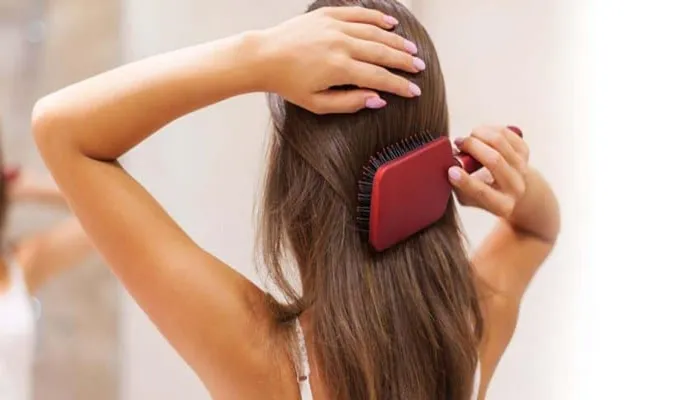Hair transplantation is a significant step toward restoring your hair and confidence. However, the recovery process requires special care and patience. One of the most common questions after a hair transplant is: “When can I brush my hair?” Brushing too soon or incorrectly can harm the newly transplanted grafts, which are delicate in the initial stages of healing.
Understanding the Hair Transplant Recovery Process
Before discussing brushing, it’s important to understand what happens to your scalp and hair follicles after a hair transplant. Hair transplant surgery typically involves removing healthy hair follicles from a donor area (usually the back of the head) and transplanting them to thinning or balding areas. These transplanted follicles need time to heal and establish themselves in their new location.
Why Is Post-Transplant Hair Care Important?
Protecting New Grafts: The newly transplanted grafts are fragile in the first few weeks after surgery. Disturbing them too early can cause grafts to fall out or not take root properly.
Promoting Healing: Proper aftercare, including washing and brushing at the right time, supports the healing process and reduces the risk of infection or complications.
Maximizing Results: Following the correct guidelines for brushing and caring for your hair can ensure that you achieve the best possible results from your transplant.
When Can I Start Brushing My Hair After a Hair Transplant?
The timeline for brushing your hair after a hair transplant depends on several factors, including the type of transplant you had (FUT or FUE), your surgeon’s specific advice, and how well your scalp is healing. In general, here’s a timeline that most patients follow:
The First 10 Days: Avoid Brushing
During the first 10 days after a hair transplant, it is crucial to avoid brushing or combing your hair. This is the period when the newly transplanted grafts are at their most vulnerable. Brushing or combing too soon can dislodge the grafts or irritate the scalp, increasing the risk of infection or graft failure.
Day 10 to Day 14: Gentle Brushing Begins
After about 10 days, the grafts are more securely attached to the scalp, and the risk of dislodging them decreases. At this point, you can start gently brushing the hair in the donor area. For the recipient area (where the hair was transplanted), brushing should still be avoided for a few more days to allow the follicles more time to fully settle.
Two Weeks Onward: Gradual Brushing of the Transplanted Area
By two weeks post-surgery, most patients can begin gently brushing the transplanted area. The grafts should be securely embedded, and the risk of dislodging them is minimal. However, care should still be taken, and brushing should be done with caution.
After One Month: Normal Brushing Routine
By the one-month mark, most patients can return to their regular hair care routine, including normal brushing. The transplanted follicles should be fully integrated into the scalp, and you can begin brushing both the donor and recipient areas without worry. However, you should continue using gentle techniques and avoid aggressive brushing, which could still cause irritation.
How to Brush Hair Safely After a Hair Transplant
While brushing is an essential part of hair care, it needs to be done carefully after a hair transplant to avoid damaging the new grafts and irritating the scalp. Below are the steps to ensure safe brushing during recovery:
Use the Right Tools
Wide-tooth comb: Start with a wide-tooth comb to detangle hair without pulling on it.
Soft-bristle brush: A brush with soft bristles is ideal for gently grooming the hair and avoiding unnecessary stress on the scalp.
Avoid hard-bristle brushes: These can scratch or irritate the scalp and disrupt the healing process.
Brush Gently
Avoid forceful strokes: Use gentle, smooth strokes when brushing your hair. This will minimize the risk of tugging on the grafts.
Start from the ends: Begin brushing at the ends of your hair and gradually work your way up to the roots, especially in the donor area.
Brush Less Frequently
In the first few weeks after your transplant, it’s better to brush your hair less frequently. Over-brushing can irritate the scalp and dislodge grafts. Once your scalp has fully healed, you can return to your normal brushing routine.
Avoid Wet Brushing in the Early Stages
Brushing wet hair can put extra strain on the hair follicles. After your hair transplant, wait until your hair is mostly dry before brushing to avoid unnecessary tension on the scalp.
Conclusion
Determining when to start brushing hair after a hair transplant is a carefully balanced process. It requires patience, understanding of the healing process, and strict adherence to the surgeon’s instructions. By following the recommended timeline, using the right tools, and being gentle with the hair and scalp, patients can ensure the success of their hair transplant and enjoy a healthy, full head of hair in the long run. Remember, post – operative care is just as important as the transplant procedure itself, and taking the time to care for the newly transplanted hair will pay off with a natural – looking and long – lasting result.
Relatd topics:
- When Can I Comb My Hair After FUE Hair Transplant?
- When Can I Shave My Hair After Hair Transplant
- Should I Brush or Comb My Curly Hair? A Complete Guide


